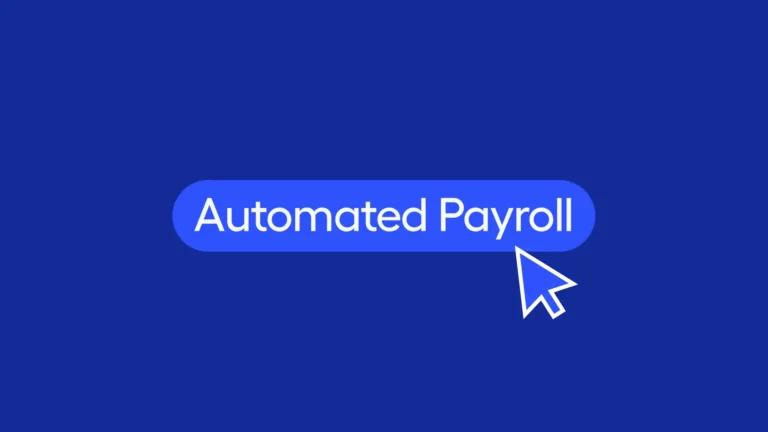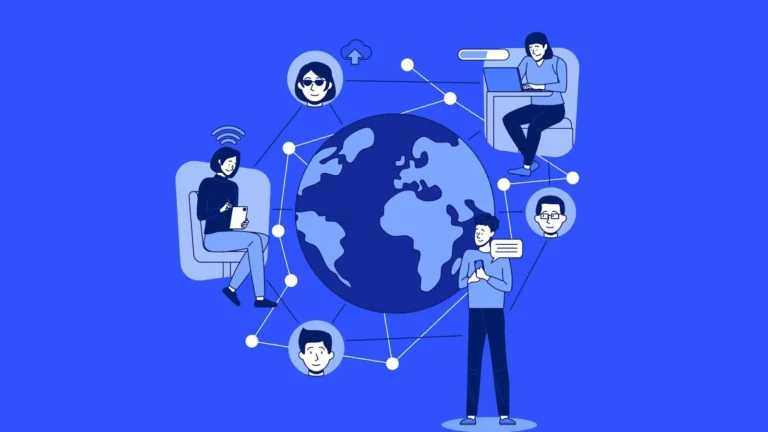Although in its infancy, businesses already tout the Metaverse as the ultimate workplace collaboration and engagement level. According to 71% of respondents to an Accenture survey, the Metaverse can have a positive business impact. 42% even call it the next “breakthrough” in workplace transformation.
This article sheds light on how employers have used the Metaverse to hire so far and what the future has in store for recruiters.
Why Move to the Metaverse: Problems With Existing Solutions
Ask the staunchest proponents their thoughts on workforce globalization, and they’d begin a verbal war against governments with conservationist policies and staunch labor laws. Then, they’d walk you through a world with open borders, businesses hiring employees from anywhere, increased employee mobility, less stringent labor laws, etc.
In their (utopian) vision, employees can freely move across borders for work. Engage with multiple employers and get paid in their desired currency. Businesses can hire anyone, anywhere – employees on workcations, digital nomads, etc. – and build teams replete with diversity.
Until a few years ago, local talent always kept up with talent demand; companies could meet talent demand from local talent pools.
However, with the growing talent crunch, businesses must break traditional notions of talent acquisition and consider hiring remote talent. Also, they shouldn’t compromise on flexibility, autonomy, etc. A FlexJobs survey conducted in 2020 found that 79% of respondents would be more loyal to their employer if they had flexible work options.
One would argue that remote work solves these issues. Indeed, employers benefited greatly over the past couple of years through increased productivity, hiring remote talent from affordable talent markets, etc.
However, remote work, too, faces its share of brickbats. Despite the pandemic forcing companies to go remote and prompting them to hire talent irrespective of location, companies are still a few years away from having systems and processes to hire and manage distributed teams. Workable’s survey noted that hiring is the second biggest problem employers face with remote work.
Buffer reported in its State of Remote Work survey that the three biggest challenges associated with remote work are unplugging after work (22%), loneliness (19%), and communication (17%). Many employers felt that if they could tailor solutions to amp up engagement and motivation at the workplace, the benefits of remote work would come full circle.
With HRs and recruiters facing the brunt of fatigue, isolation, and burnout, providing them the right environment that soothes their nerves by improving connectivity and automates mundane tasks would make working remotely much more productive.
So the question is this – what would be an all-encompassing environment that would plug recruiter-candidate engagement gaps but wouldn’t require people to congregate and work from one place?
It is when these problems needed perspectives Mark Zuckerberg put the Metaverse into public discourse.
The Case of Virtual Fairs and Hiring Avatars: What does hiring in the Metaverse look like?
“Screens just can’t convey the full range of human expression and connection. They can’t deliver that deep feeling of presence. But the next version of the internet can. We should be building technology that’s built around people and how we experience the world and interact. That’s what the Metaverse is all about.” – Mark Zuckerberg, Meta CEO
Many experts feel that hiring in the Metaverse would be nothing new but regurgitating traditional recruitment forms in a twin digital universe.
However, the Metaverse bridges many hiring gaps left by remote work. This is evident from the popularity of virtual fairs in the Metaverse.
For instance, Cape Gemini’s Metaverse career fair allowed candidates across six universities in the USA to attend their career fair. The company also sent Occulus headsets to these students to access the Metaverse.
Another example is Samsung Electronics’ virtual career fair, where job seekers and employers donned avatars to exchange conversations on job expectations. Candidates were able to receive consultation during the event as well. Employers established a more emphatic relationship with their candidates. HRs could supersede body language barriers and have a more in-person understanding of the candidate.
Joel Baroody, head of recruiting at fintech startup Brex, recently shared at the first-ever Metaverse hiring event and career fair:
“The last two years have gone by really fast, and we’ve forgotten some of the pains pre-pandemic what interviewing was like. We were thinking through the mess that it was to find conference rooms, the mess that it was to coordinate schedules and to get people into Ubers to find the office. We were flying people from all around the country and spending thousands of dollars on airfares, so someone could come into the office for two to three hours. So the immense efficiency that virtual recruiting has provided, I think it’s here to stay.”
And rightly so. Recruiters strongly believe they can better judge a candidate’s behavior, confidence, and personality through AR-enabled interviews while simultaneously cutting down costs incurred by in-person interviews.
Businesses can conduct virtual fairs and mass campaigns for Metaverse recruitment without considering geographic barriers. Candidates can attend meetups from their home countries by simply tapping on a link.
It is crucial to note how these experienced boost candidate-recruiter familiarity and personalized communication. There’s so much optimism around how embracing digital reality can improve collaboration. All this happens with humans distributed worldwide, yet nobody gets the obnoxious fatigue of face-face meetings. These benefits are further affirmed by Business Insider reporter Stephen Jones, who, on attending a virtual career fair hosted by Hirect, the journalist felt the entire experience was too lifelike.
Offer a digital helping hand to candidates
Also, will we be alone in the Metaverse?
Recruiters and HRs will have much assistance with bots who can emulate our actions and offer personalized conversations when hiring in the Metaverse. This could have a lot of implications.
Many HR tasks are repetitive. Recruiters usually spend much time filtering candidates through telephonic interviews with standardized questions. Recruiters can offload these mundane tasks to a digital assistant who can overlook these calls, gather data, and filter unsatisfactory prospects.
One cutting-edge example is Publicis Groupe’s appointing of Leon, a digital avatar, as their Chief Metaverse Officer. With the support of the right expertise and teams at Groupe, Leon provides guidance to customers on how to approach the meta jungle, guide employees on how to navigate it, and showcase the best examples of Web3 from our clients.
Similarly, a digital avatar designed for hiring can help candidates acquaint themselves with your company by answering queries on company culture, job responsibilities, etc. Unlike humans, bots can simultaneously help multiple candidates. They can also eliminate unconscious bias while hiring.
Metaverse makes it possible for more targeted and experiential forms of recruitment
During the Industrial Revolution, employers used billboards in salons and shops to advertise open job roles. Then dawned the internet age, where we saw the rise of less intrusive and more personalized ways, such as job portal sites, networking platforms, etc., to post hiring ads.
As Metaverse recruitment evolves, we can expect 3D experiences that illustrate a typical employee’s day in life are the most predictable innovation.
The Metaverse may forever rest the story of employees who, on the day of induction, would find that the job isn’t what they thought it would be. These experiential job descriptions would allow candidates to learn through life-like simulations of how their positions would happen daily.
Secondly, employers can design rooms that allow and deny entry based on job levels, experiences, etc. They can even use digital humans who can conduct personalized conversations to understand the expectations of the candidates and tailor experiences more specific to them. Employers can also gamify interviews and tests and use their in-person-like behavior to gauge interview performances.
Data Privacy Policies & Regulation Mustn’t Play Catchup
We have seen how data privacy laws are still playing catch up in regulating data flow and security over the internet. Experts fear this may happen with the Metaverse too.
Although recruitment in the Metaverse seems convenient and nullifies several pains of hiring over video calls, experts warn us of data privacy issues. For example, if a candidate’s body cues, movements, and speech are judged over a virtual interview, this also means that the employer also records all their actions.
Nevertheless, life in the Metaverse, as we imagine, is still ten to fifteen years away. Seamlessly using the Metaverse for work will take time owing to technological constraints. Accessing the Metaverse is still tricky as wearables are clunky, intrusive, and thus inconvenient.
This provides ample time for companies, regulatory bodies, and governments to pass privacy laws to protect candidates. Governments must also identify new forms of discrimination in the Metaverse and pass laws. Companies must also have policies to consider the cost of providing employees with virtual reality goggles and motion capture gloves. This calls for deliberate processes for onboarding employees in the Metaverse. Read all about virtual onboarding in the following article in the Metaverse Series.






